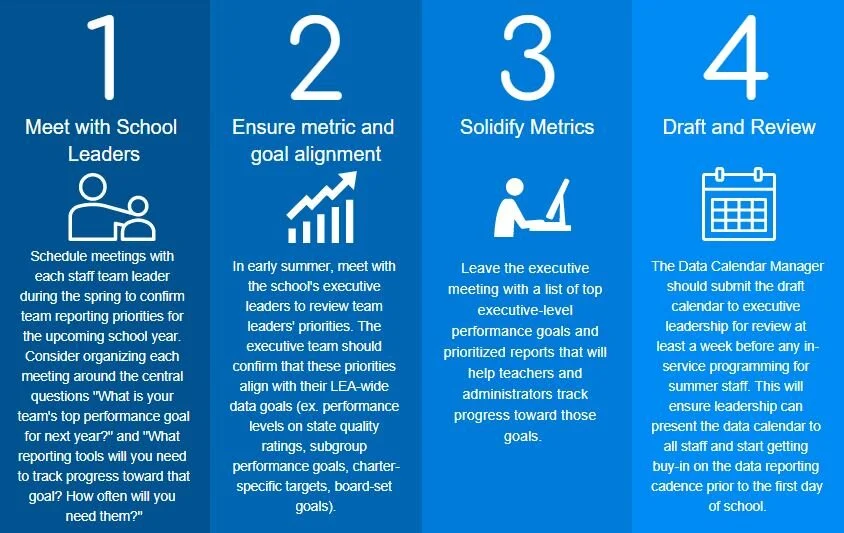Drive Year-Round Decision Making with a Data Calendar
Teachers and administrators need access to high-quality student data to make instructional and intervention decisions. However, getting access to this data can be a challenge in the face of staff turnover, the large number of data systems, the high volume of external data requests, and the lack of coordination among different teams.
One way to overcome these challenges and ensure that instructional staff have the information they need to make sound decisions is to create a shared data calendar.
A data calendar is a centralized document that displays all dates relevant to student data reporting and sharing. The calendar should capture both inputs (e.g., interim assessment dates, gradebook data entry deadlines) and outputs (e.g., report card distribution dates, board meetings, instructional team meetings). A Data Calendar Manager, typically a school administrator such as the Data Manager or Dean of Instruction, is the point person for calendar development and distribution to all relevant parties.
Data Calendar Creation Process
The four step process below outlines the suggested timeline and key responsibilities of the Data Calendar Manager.
5 best practices to keep in mind while developing a data calendar:
Critical metrics to academic and school success must be clearly defined so data consumers understand what they’re viewing. These metrics should also align with school goals.
Each type of data input or report must have a single owner. While multiple staff members can work on a report, only one should be ultimately accountable for on-time, accurate completion.
The reporting frequency (e.g., weekly, monthly, quarterly) must be reasonable and tied to the cadence of decision-making / intervention implementation within the school.
Every data report must be actionable. It must pass the “so what?” test: What concrete steps can stakeholders take in their practice after reviewing the report? Those steps (and their timeline) should also be noted on the data calendar.
The calendar should include 3-4 occasions during the school year for step-back meetings with the school’s executive leaders to review progress toward goals.
In addition to ensuring cross-school visibility into key deadlines and data needs, a data calendar can help school leaders identify cases where a data report is a vestige from previous years, no longer used to aid decision-making, or conversely, when an upcoming decision may not have relevant data prepared to back it. In other words, a shared data calendar can help schools become more efficient producers, and users, of data.

